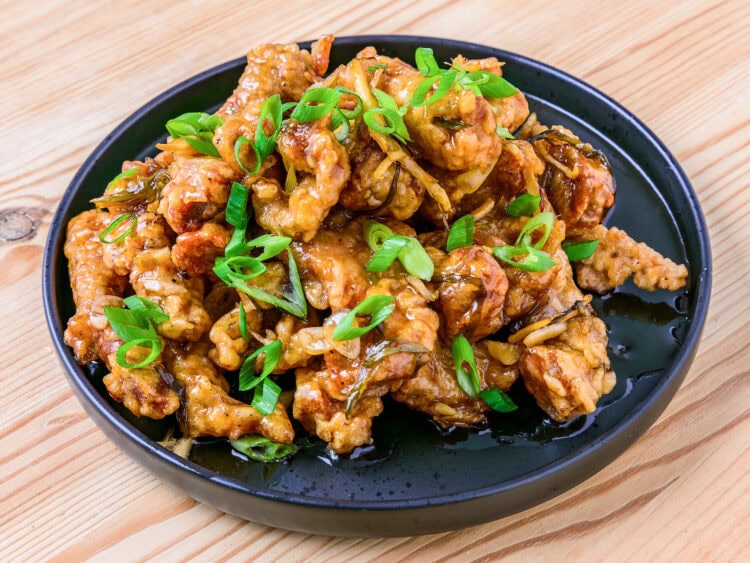A delicious recipe for ultra-crispy Korean pork fritters with homemade sweet and sour sauce
There are few restaurants specializing in Korean cuisine that don’t offer it on the menu. Indeed, how can one resist the conviviality offered by a delicious shared bowl filled with pork coated in an ultra-crispy breading and a mouthwatering sweet and sour sauce?
We enjoy, we share, we have a good time. In short, pure happiness. Today, I’m going to teach you how to recreate these moments at home, in comfort, and at a lower cost
What is Tangsuyuk?
Let’s start with its origins. Tangsuyuk (탕수육) is actually not a dish originating from Korea. Like the recipe for jajangmyeon and jjamppong, it has Chinese origins and Koreans have only slightly adapted it to their tastes. More specifically, it’s derived from Guo Bao Rou, originating from Shandong province and the broader Dongbei (Northeast) region.
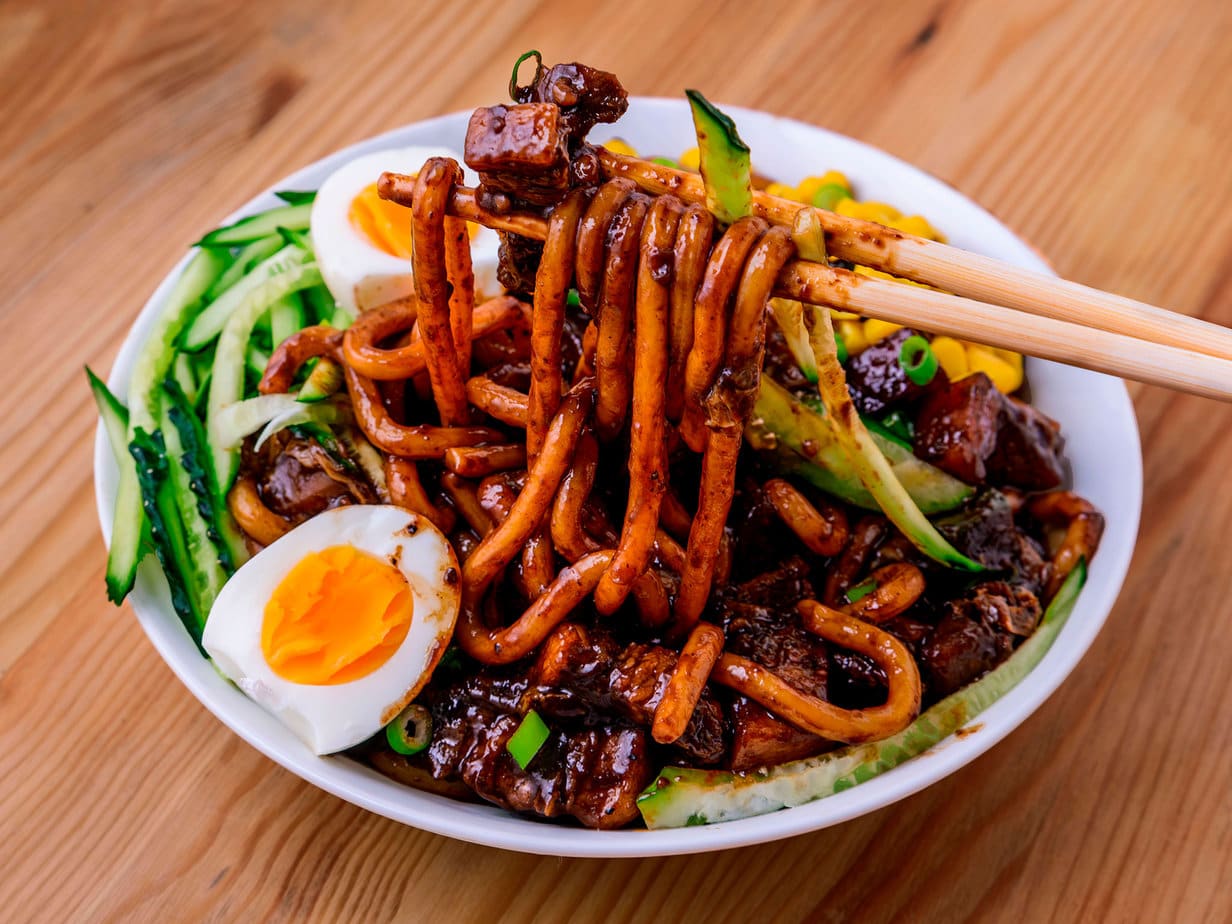
But ultimately, what are these differences? In theory: Many vegetables are added to the sweet and sour sauce such as bell peppers, mushrooms, carrots,… and pineapple juice too.
In practice, many restaurants will settle for a much simpler sauce, bringing it closer to its Chinese origins. And that’s why I’ve also chosen simplicity for this recipe.
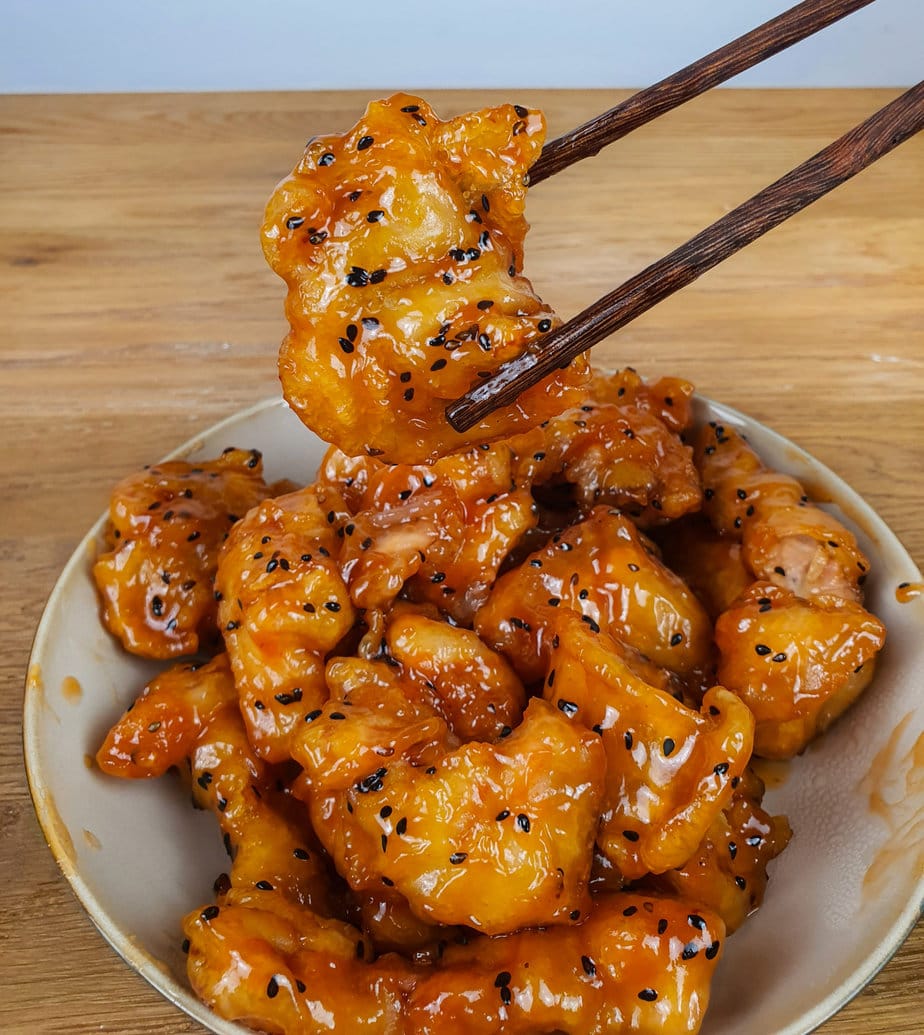
How to serve Tangsuyuk?
Two options: With the sauce poured over (my favorite) or with the sauce served on the side for dipping the pork fritters. The advantage of the second option is that you can vary the sauces for more enjoyment
The main ingredients of Tangsuyuk
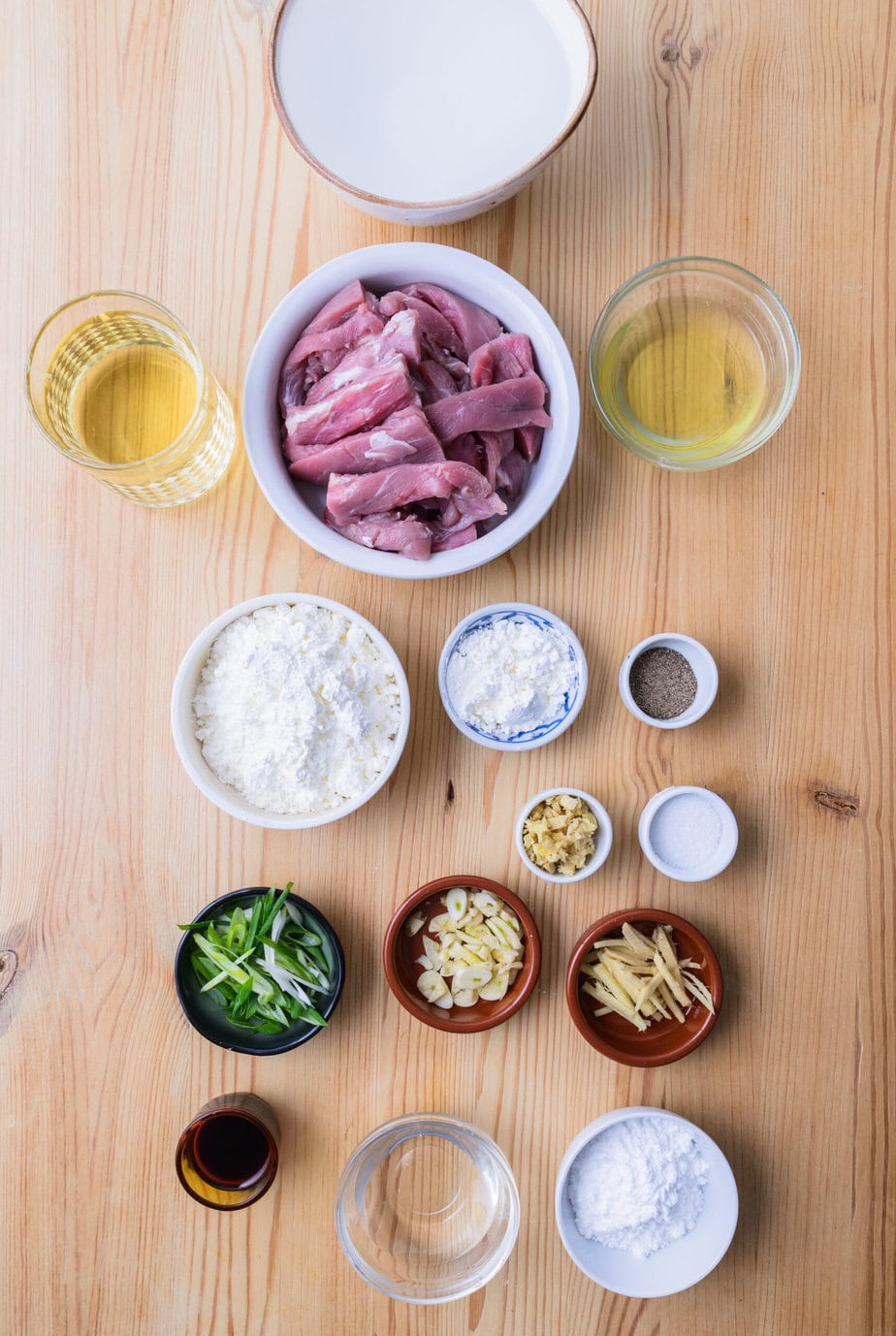
The pork: Choose a marbled cut but without large pieces of fat. Pork shoulder, for example
Potato starch: Essential for the unique texture of the breading, as with Korean fried chicken
Light soy sauce: Classic salty soy sauce found everywhere.
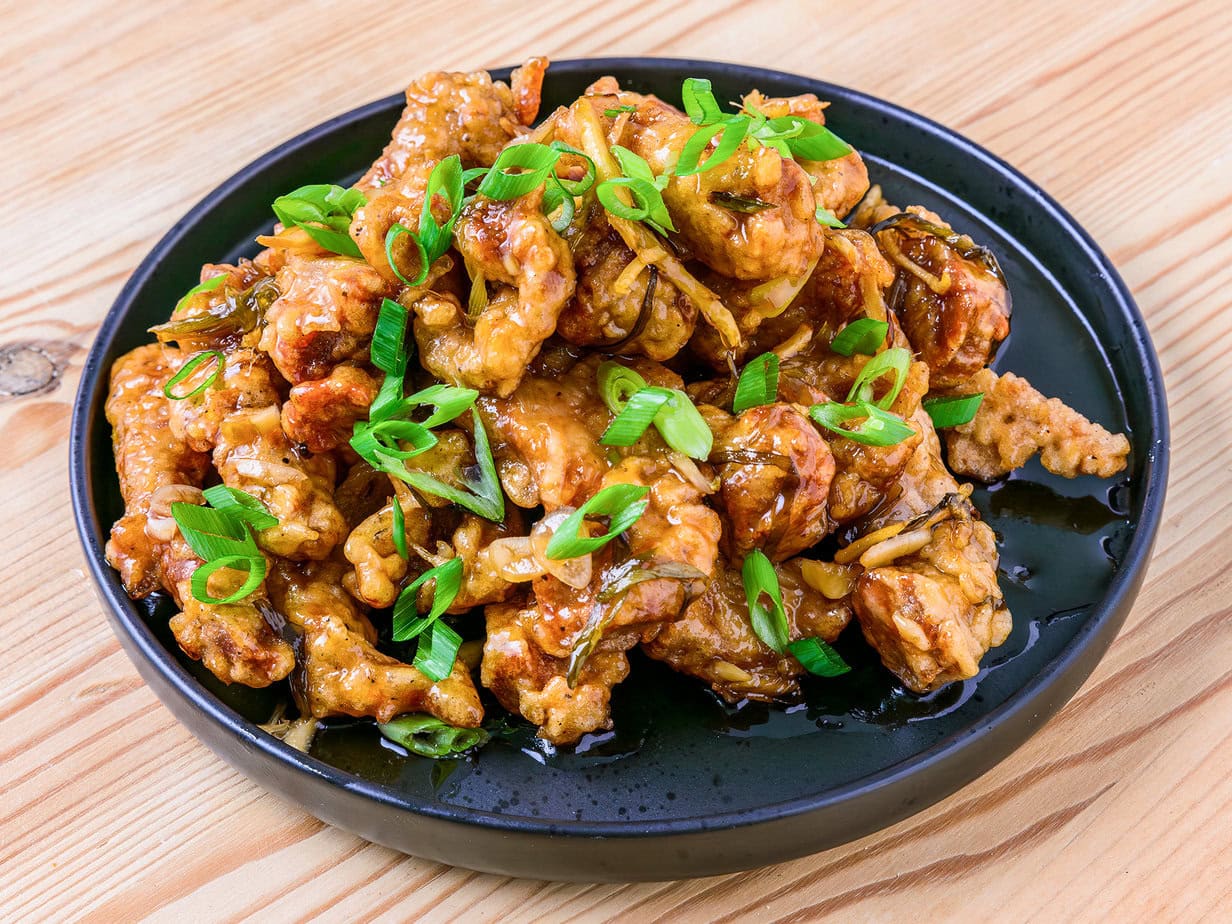
Tangsuyuk – Sweet and Sour Fried Pork
Equipment
- Asian fried food
Ingredients
- 450 g of pork tenderloin cut into strips of about 5 cm x 1.5 cm
- 200 g potato starch
- 750 ml water
- 35 g potato starch to add later
- 1 egg white wide
- 1 L neutral oil for frying
Marinade
- 0.5 teaspoon of ginger chopped
- 1.5 teaspoon salt
- 0.25 teaspoon black pepper ground
Sauce
- 4 cloves garlic trenches
- 15 g of ginger julienned
- 2 stems young onions julienned
- 4 tablespoons rice vinegar
- 6 tablespoons powdered sugar
- 2 pinches salt
- 2 teaspoon light soy sauce
For garnish
- Green onions green parts, finely sliced
Instructions
- Mix the pork with the marinade. Mix well, cover and refrigerate450 g of pork tenderloin, 0.5 teaspoon of ginger, 1.5 teaspoon salt, 0.25 teaspoon black pepper
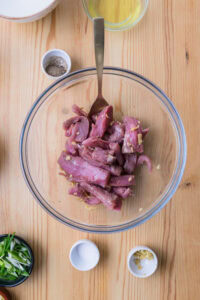
- Mix the potato starch with water in a bowl using a spoon. Let it sit on the counter until the starch settles at the bottom of the bowl and solidifies (about 1h30)200 g potato starch, 750 ml water

- Remove the pork from the fridge and mix it with the reserved potato starch35 g potato starch
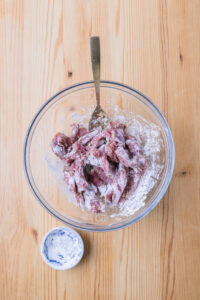
- Discard the water from the bowl of settled starch (keeping the starch at the bottom).
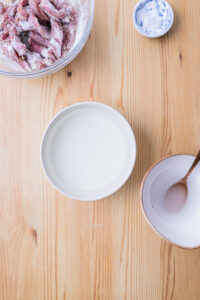
- Add the egg white and mix well1 egg white
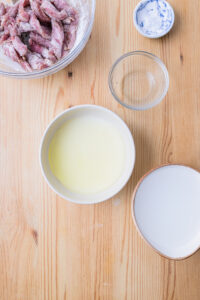
- Add the starch/egg white mixture to the pork and gently mix with your hand
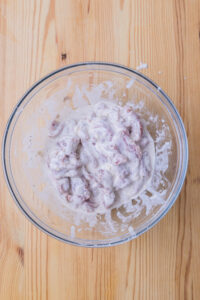
- Fill a deep pot or fryer with oil and heat until it reaches 165 degrees Celsius1 L neutral oil
- Test the temperature by dipping a piece of pork into the oil; if it sizzles, the oil is ready
- Place the pieces of pork in the hot oil, separating them with tongs if they stick together. Fry in batches if necessary, until crispy and golden (about 5 to 7 minutes)
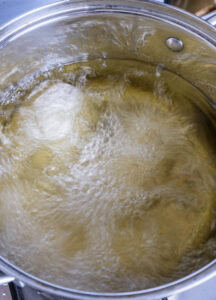
- Transfer the pork pieces to a colander placed over a bowl to drain
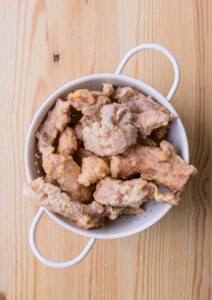
- Reheat the oil and fry the pork a second time, until very crispy and golden brown (about 3 to 4 minutes)
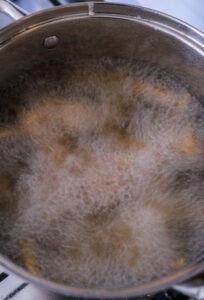
- Drain and transfer to a plate
Sauce
- In a bowl, mix the sugar, light soy sauce, salt and rice vinegar until the sugar is almost dissolved4 tablespoons rice vinegar, 6 tablespoons powdered sugar, 2 pinches salt, 2 teaspoon light soy sauce
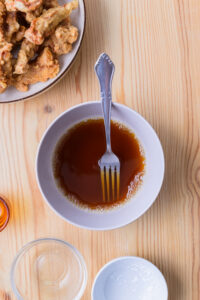
- In a large wok, heat a little oil over high heat.
- Add the green onions, ginger and garlic and stir-fry for 1-2 minutes4 cloves garlic, 2 stems young onions, 15 g of ginger
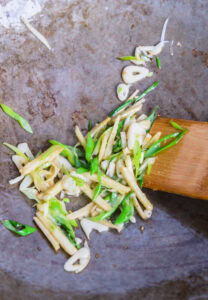
- Add the sauce mixture and stir until the sauce reduces and bubbles a lot (almost caramelized)
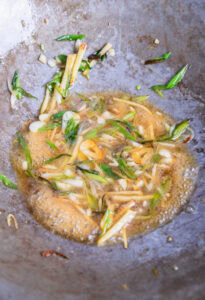
- Add the meat and stir-fry quickly to coat everything with sauce
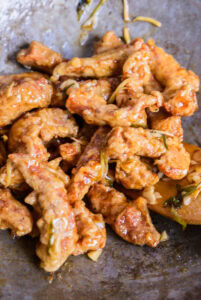
- Serve immediately, add some finely sliced green onions on topGreen onions
Notes
Nutrition
Culinary sources
I based the breading process on maangchi’s recipe
